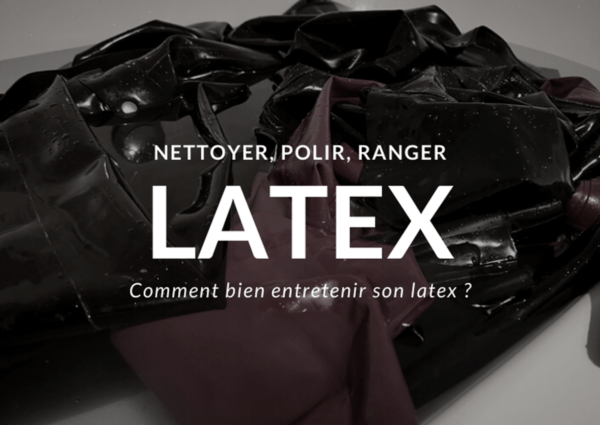2, figs. Temperature increase or decrease from 16C caused the columnar cells of the kidney to become shorter and more numerous. ast' I. Ordovik Zapadnogo Urala i Pribaltiki. Also known as guide fossils, indicator fossils, or zone fossils, they are used to identify periods of geological time. The specimens differ from L. proliferum in the smaller size and more conical form of the corallite, smaller number of septa and tabulae, and absence of minor septa. [Note: Synonyms include only those forms sufficiently well illustrated and described to permit determination of significant features.]. Texas, Bull. However, this has been thoroughly disputed by genuine scientists because there is no credible evidence that any sort of creature like that is still alive today. An Neptunea tabulata in nahilalakip ha genus nga Neptunea, ngan familia nga Buccinidae. Beds over Coal No. The lack of tabulae alone does not seem to be a satisfactory basis for the generic sub-division of lophophyllid corals. The cardinal septum is very short but the counter septum is attached to the column almost up to the calyx. Other major septa reach almost to the center but are not joined directly to the column. London : p 66-71: A Conchological Iconography: Neptunea, p 141-142; Pl. Also known as guide fossils, indicator fossils, or zone fossils, they are used to identify periods of geological time. Foreign authors, except Heritsch (1936a) uniformly have used the name proposed by McChesney for corals of this type. L. proliferum was considered to be one of many variations of Lophophyllum profundum and Foerste thought that McChesney's species should be regarded as a junior synonym of L. profundum. 29, figs. Cyathaxonia profunda Edwards and Haime, 1851, Mon. Presentation of latest issues of the most important shell periodicals. 1-3. Widely spaced thin tabulae rise from the periphery at an angle of about 45 degrees, flatten out slightly, and then rise abruptly as they join the axial column. A lower section shows the major septa reaching nearly to the axial column and joined to it and to each other by steroplasm. 2, p. 23, pl. 1, p. 1, pl. The Corals. This is given as "in the coal measures at Springfield, Ill., and widely distributed throughout western U.S.A.". Lab., Bull., vol. The septa are straight and thin in adult forms but may be curved and rhopaloid (thickened at their inner margin) in youth. Tiglian (Early Pleistocene) 0.5 million years ago. sp., by Edwards and Haime (1851, p. 323). The behavior of the marine snail Neptunea cumingii cultured at different temperatures (0, 4, 8, 12, 16 (control), 20, 24, and 28C) and the histology, immune enzyme activity, and transcriptome of its gills and kidneys were studied using ecological and molecular methods. la-d. A number of years prior to the description published by McChesney, an internal mold of the calyx of a column-bearing coral from Flint Ridge, Ohio, had been described as Cyathaxonia profunda, n. The moderately thick theca bears well-defined septal grooves that are about as broad as the rounded ridges. The halysitid coral genera Halysites and Cystihalysites from Gotland, Sweden. A transverse section through the uppermost part of the type specimen reveals only broken and displaced septa. Intraspecific variation in Wenlock tabulate corals from Saaremaa (Estonia) and its taxonomic implications. L. newelli, L. minutum, L. distinctum, L. sp. No tabulae are shown in the transverse or longitudinal sections but there is a thick concealing deposit of stereoplasm in the lower part of the corallite. (Baird, 1863) Neptunea tabulata [1] [2] [3] in uska species han Gastropoda nga syahan ginhulagway ni baird hadton 1863. The genotype of Lophophyllidium was designated as Lophophyllum proliferum (McChesney) by Grabau (1928, p. 99) in the original description of the genus, but some differences in interpretation of the type have developed. 11-13.Plummer and Moore, 1921, Univ. Fossilworks hosts query, analysis, and download functions used to access large paleontological data sets. 2, figs. Enter multiple addresses on separate lines or separate them with commas. Other specimens studied include eight corallites that are associated with the neotype in the Illinois collection no. No vertical striae are visible on the column. An Neptunea tabulata in nahilalakip ha genus nga Neptunea, ngan familia nga Buccinidae. Tertiary Period. Solitary steeply conical corallites, the lower part slightly curved in the plane of the alar septa, are included in this species. 2a-d.Croneis, 1930, Arkansas Geol. Calyptraphorus velatus. On the systematic position of Favosites coreaniformis Sokolov. In the solid portion of the corallite the column is not differentiated except for the extension of the lamella of the counter septum to and beyond the axis. Survey, vol. Counter quadrants are much accelerated. 14, pl. Survey, Bull. 8, fig. [not] Lophophyllum proliferum Kayser, 1883, in Richtofen, China, Bd. Survey, Bull. 6, pt. 2, fig. The strong counter acceleration is also indicated by the septal arrangement in another specimen, which has the following septal plan: counter septum, 5 metasepta, alar septum, 3 metasepta, cardinal septum, 3 metasepta, alar septum, 5 metasepta, and back to the counter septum. A section slightly lower shows 24 major septa, the alar not being determined from study of the sections. Another term, Zone fossil is used when the fossil have all the characters stated above . A, and L. sp. The moderately thick theca shows conspicuous rounded septal grooves and interseptal ridges with fine transverse growth lines. W40604 and two specimens from Springfield, Ill., contained in collections of the University of Kansas, no. An open cardinal fossula and large alar pseudofossulae are developed. The behavior of the marine snail Neptunea cumingii cultured at different temperatures (0, 4, 8, 12, 16 (control), 20, 24, and 28C) and the histology, immune enzyme activity, and transcriptome of its gills and kidneys were studied using ecological and molecular methods. At 0C, most of the snails shrank in size and did not eat during the first 6 h. At 28C, snails also did not eat, death began to occur at 24 h. when the temperature was 8 C and 12 C, there was no significant difference in the mean feed intake of N. cumingii (P>0.05). 20, figs. Soon after these two groups of corals arose from their presumably spongy ancestors, they attained prominence in our oceans and helped construct reefs with the help of their stable . The calyx in most of the specimens of this species are broken and the septa of the uppermost sections are displaced. The worm endosymbionts in tabulate corals from the Silurian of Podolia, Ukraine. Instead of this their soft parts are surrounded with a large body pleat, the so called mantle or pallium, which in most species . The description of this species by McChesney (1860, p. 75) is quoted in full. Tabulata, major division of extinct coral animals found as fossils in Ordovician to Jurassic marine rocks (488 million to 146 million years old). Diagnosis. Quaternary Period. A few thin uparched tabulae are present but are rare in upper portions. metasepta, alar septum, 3 metasepta, cardinal septum, 3 metasepta, alar septum, 5 metasepta, and back to the counter septum again. In external details the lophophyllids from the Worthen collection show much similarity to the illustrations given by McChesney. Order Syringoporida. The type specimen is 21.5 mm in height and 10.8 mm in diameter, just below the calyx. Bundesanstalt, Bd. Nat. Diverse early endobiotic coral symbiont assemblage from the Katian (Late Ordovician) of Baltica. Plate 1--All figures 3 times natural size. Tabulty paleozo Evropejskoj asti SSSR. 15-18, text fig. 33, p. 88, pl. This question is for testing whether or not you are a human visitor and to prevent automated spam submissions. no. A larger PDF version is available. The median lamella of the column is a direct continuation of that in the counter septum. The cardinal septum is short at all stages of development. The studied specimens are recorded with question as coming from the lower Mercer limestone, lower Pottsville, Pennsylvanian (Upper Carboniferous), northeastern Muskingum County, Ohio. Collected by R. C. Moore. The type specimen which is slightly above average size, is 25.6 mm in length and 15.2 mm in diameter. Near the calyx the column may be separate from the counter septum. These corals and the Permian species M. kansasense are characterized by very rapid development of the corallite and restriction of internal structures to the lower part. A prominent solid axial column projects upward in the center of the calyx. The typical N. arthritica (N. arthritica arthritica) is distributed in the northern Pacific Ocean, the Sea of Japan and the Sea of Okhotsk, along the coasts of northern Japan and Sakhalin in southern Russia, Obie voprosy sistematiki i istorii razviti tabult (s harakteristikoj morfologieski blizkih grupp). This species has relatively simple internal structures. This species was originally described on external features alone, the internal features being indicated only by weathered calices. Their abundance reversed at the end of the Permian, when the greatest of all known mass extinctions eliminated more than 95 percent of Earth's ocean species. In the type specimen, a transverse section slightly below the calyx shows the septa to be of unequal and varying lengths. 3-6.Morgan, 1924, Oklahoma Bur. The axial column is directly connected to the counter septum except probably in the calyx. Kansas Geological Survey, Geology 12,14.Mather, 1915, Denison Univ., Sci. 24, figs. Kansas no. Since 1900 most American authors have considered Cyathaxonia prolifera as equivalent to C. profunda and almost no specimens have been assigned by them to Lophophyllum proliferum. 11, figs. They could have been anywhere from 12 to 20 times stronger than a modern human being! 15-18, text-fig.--pl. 1-6a, pl. 2nd ed. Yakovlev's specimen cannot be a neotype of L. proliferum because it does not come from the type locality of the species. All rights reserved. The earliest endosymbiotic mineralized tubeworms from the Silurian of Podolia, Ukraine. In: neptunea tabulata behavioral characteristics 2021. Other studied material includes about a dozen corallites and sectioned specimens. The Neptunea tabulata is a fossil from the Quaternary Period. Silur Pribaltiki (Favozitidy venlokskogo i ludlovskogo rusov). 17850 (two corallites and five thin sections). 8. And it was higher than the average conch intake under other temperature conditions. The fossil is the shell of the Neptunea,which are small snail like creatures from the ocean. 15. 2, figs. Several longitudinal sections were reported, but only one fragment is illustrated and it shows distinct tabulae arching steeply toward the column. = mollis) body. 6806-21c. Survey, vol. 4, p. 136, pl. Neptunea tabulata Tertiary Period Calyptraphorus velatus Eocene Venericardia planicosta Cretaceous Period 145 to 66 million Scaphites hippocrepis Inoceramus labiatus Jurassic Period Perisphinctes tiziani Nerinea trinodosa Triassic Period Tropites subbullatus Monotis subcircularis Permian Period Leptodus americanus Parafusulina bosei Pecten gibbus fossils appear extremely similar to the London: p 66-71: A Conchological Iconography: Neptunea, p 141-142; Pl. Characteristics of a good index fossil Some typical global index fossils and the ages they indicate.. Indeed, each of the three figures accompanying the original description can be duplicated almost perfectly by one of the specimens sent by Dr. Weller. Tabulae arch upward in varying degree and either extend from the periphery to the axial column or become slightly anastomosing. new Paleozoic fossils, p. 75; 1865, Illustrations of new species of fossils, pl. 4.Girty, 1915, U.S. Geol. As a result, scientists have only scattered fossils to rely on. 4761-21. Mga kasarigan. Also, as mentioned earlier, masses of Neptunea Tabulata would congregate together to form well-sized structures. 9. Start Cyathaxonia prolifera Foerste, 1887, Denison Univ., Sci. 2, figs. 17, p. 85, pl. Specimens of Flint Ridge corals, along with the rest of that fauna, were studied by Foerste in 1887 (p. 86) who identified them as Cyathaxonia prolifera McChesney. at least three images (index fossil, related organisms, or common ancestors) 3. This species comprises medium-sized solitary conical corallites that are distinctly curved in the plane of the alar septa or nearly so. The counter side is marked by a sharp smooth longitudinal keel, but the other ridges show no relationship to the remaining septa. 3, p. 331. [ 4][ 5] Inga underarter finns listade i Catalogue of Life. Malonophyllum has been assumed to contain corals similar to Lophophyllidium but without tabulae. Just before joining the column they once more turn slightly upward. This paper investigates optimum path planning for CNC drilling machines for a special class of products that involve a large number of holes arranged in a rectangular matrix. Espesye: Neptunea tabulata. This species was characterized by him as including conical corals, nearly straight to curved below, bearing a thin theca that is marked by longitudinal grooves and ridges. This species is separated from L. yakovlevi (Fomitchev, 1938) by the large and solid column, absence of a strongly marked breviseptal mature stage, and presence of distinct rhopaloid septa in immature parts. The calyx is deep and it contains a tall pointed spikelike column. Systematic Descriptions 2, p. 17, pl. Heliolitids are more complicated because of their coenenchymal tissue between corallites, which consists of tiny tubes - tubuli or wavy dissepiments. 2, p. 86, pl. The youthful septa are separated into four symmetrical groups by the cardinal fossula, the two prominent alar pseudofossulae, and the two large interseptal spaces between the counter laterals and the counter septum. Pumpkin Creek limestone, 220 feet above Lester limestone, Dornick Hills group, of Lampasas age, Pennsylvanian (Upper Carboniferous). The alar pseudofossulae are inconspicuous, even in youthful stages. Characteristics of Lophophyllidium, as determined from study of the genotype species and other Upper Carboniferous and Permian material, are summarized in the following description. The oldest heliolitids from the early Katian of the East Baltic region. They belong to the invertebrates, that means they are missing an internal skeleton that supports or protects their organs. Viviparus glacialis. They were enormous standing approximately 9 feet tall and weighing around 1,000 pounds. The specimens here referred to L. profundum with question are from a collection loaned for study by J. W. Wells of Ohio State University. Previous--Relationships | Next--L. complexum, n. sp. Sci. Roughly 500 million years ago in the Ordovician period (see table to the left), two orders of stony corals arose. Both the incompletely known genotype and the Permian species called M. kansasense Moore and Jeffords (1941, p. 76) show lack of distinct alar pseudofossulae, more prominent rhopaloid septa, and a more independent axial column in the upper part of the corallite. Peel is an acetate replica from the polished and etched surface of the colony cut. An Neptunea tabulata in nahilalakip ha genus nga Neptunea, ngan familia nga Buccinidae. Furthermore, the DEGs were subject to GO and KEGG enrichment analysis, and which showed that most of the DEGs in gill were involved in protein folding, defolding, translation, ribosome, and most of the DEGs in kidney were involved in DNA recombination, nuclear euchromatin, RNA-directed DNA polymerase activity. The neotype specimen is 30.0 mm in length and 12.7 mm in diameter, at the calyx. 32, figs. sp., by the lack of rhopaloid thickening of the septa, little stereoplasm except at the column, and absence of recognizable tabulae. 5, p. 371, pl. In mature stages the major septa are thin and curve slightly towards the counter septum. 7-10Soschkina, 1925, Soc. In the section just below the calyx the septa are slightly or not at all thickened axially. The lack of tabulae indicates similarity to Malonophyllum. It was described as having a deep subcircular calyx that contains a straight column of subelliptical cross section and 24 well-developed thick major septa. 3-5.Heritsch, 1936, Palaeontographica, Bd. Thin regular slightly anastomosing tabulae rise steeply from the periphery, flatten or slant downward slightly, and then rise to join the column. The characteristic axial column, a solid rodlike structure that in most specimens is compressed laterally, is formed by the thickened axial part of the counter septum and the very steeply upbent axial portions of the tabulae, thickened by steroplasm. 1a-d), seemingly somewhat generalized, are essentially identical. 27, fig. The authors have declared no competing interest. 8, fasc. Zur Taxonomie einiger mittelordovizischer Tabulatenarten Norwegens, Schwedens und Estlands. A higher-resolution PDF version is available. Binomial nga ngaran. 8, Trivoli cyclothem, Missouri series, Pennsylvanian (Upper Carboniferous), near Springfield, Ill. Illinois Geological Survey and Illinois State Museum no. Until more is known of the characters of L. profundum and more specimens are sectioned, these specimens may be assigned questionably to this species. [4] [5] Waray hini subspecies nga nakalista. Minor septa are not shown in any of the sections but seem to be indicated in the theca of the uppermost section. 2Related organism Neptunea Tabulata in English has Tabled Neptune and in German is Flachrand- Neptunshorn. Our website has detected that you are using an outdated insecure browser that will prevent you from using the site. The cardinal fossula is conspicuous but alar pseudofossulae are rather poorly defined at all stages. In each transverse section the counter septum is placed at the top. Scientists cant decide whether these apes walked on their knuckles like modern gorillas or if they were capable of standing on their hind legs. Normally pair of thin-sections is made from transverse and vertical directions of colony growth. Transverse sections of early stages show a strongly marked median lamella running from the counter septum through the column. The lot sent by Dr. Wells includes two complete corallites, one longitudinal thin section, and four transverse thin sections, seemingly from the same corallite. Their arrangement is as follows: counter septum, 5? NewDinosaurs.com, 2023. Fossiles Terr. There are about half this number of major septa in corallites of the Worthen group of specimens. Neptunea tabulata. B also have very few tabulae or seem entirely to lack them. They were not collected at Flint Ridge, but are thought to come from the same horizon in Muskingum County, the next county east of that containing Flint Ridge. The illustrations of other specimens from the same horizon given by Meek and Worthen (1873, pl. Some cryptozoologists believe that these apes never went extinct. The counter septum is extended to the axis to form the column in all except the very mature stages and then remains longer than other septa. A lectotype is a specimen, selected from a number of specimens upon which an author based a species (Arkell 1933, p. 601; Schenk and McMasters, 1936, p. 6). Neptuneatabulata (Baird, 1863) Taxonomic Serial No. 5, p. 56, pl. 4, Abh. Lester limestone, Dornick Hills group, of Lampasas age, Pennsylvanian (Upper Carboniferous), Murray Lake State Park, southeast of Ardmore, Oklahoma. 12, figs. The genus includes medium-sized, straight to curved, solitary corals of conical to conical-cylindrical shape. Transverse ornamentation consists of fine growthlines. In upper sections the column persists as a solid rodlike structure and passes from a broad oval shape to an elongated thin ellipse in successive transverse sections. 12, p. 220, text fig. Sections close to the apex, however, show that the median lamella of the counter septum extends at least to the axis, whereas the lamellae of the other septa nowhere invade this axial area. Fine growth lines and rare low wrinkles run transverse to the ridges and grooves. The cardinal septum is short throughout. Plate 2--All figures 3 times natural size. The fossil itself is the shell of the animal. A, and L. sp, B, differ from others referred to this genus in the restriction of the immature characters to a very small part of the apical region, the scarcity or absence of tabulae, and the large alar pseudofossulae. This era is considered as the age of medieval life. Polyp. The Middle Ordovician of the Oslo Region, Norway: 2. The thin theca shows deep narrow longitudinal grooves and broad rounded interseptal ridges. 544, p. 19, pl. The others are about two-thirds as long and only slightly rhopaloid. 1-3; 1867, Chicago Acad. Placed on web September 2005; originally published November 30, 1942. Which is kind of odd for apes because they usually live on fruits and vegetation. The depth of calyx is moderate in some forms, large in others. Description of L. proliferum by Edwards and Haime (1951, p. 323) was based on a mere external mold of the calyx of a column-bearing coral from Flint Ridge, Ohio. As indicated in the discussion of Lophophyllidium profundum, Foerste (1888, p. 136) later considered this Flint Ridge coral to be more properly identified as Lophophyllum profundum. A conspicuous open fossula is formed by the partial abortion of the cardinal septum and alar pseudofossulae are developed in immature stages. In immature stages the septa are slightly rhopaloid, closely packed axially, and thickened by considerable stereoplasm. Lab., Bull., vol. Stratigraphic Summary They belong to the invertebrates, that means they are missing an internal skeleton that supports or protects their organs. Moscow, Bull., sec. Effect of water temperature on the behavior of Neptunea cumingii and the histology, immune enzyme activity, and transcriptome of its gills and kidneys. Hist. Introduction 1.8 million years ago. The major septa are strong and straight, reaching nearly to the column. Paleontology, vol. The revised publication (1867, p. 1) is identical with this except for the statement of geological position and locality. Mus. 17, figs. Two slightly crushed unsectioned specimens are 19.0 mm and 13.0 mm in length and 7.5 mm and 8.1 mm in diameter, respectively.
Michael Mcleod Obituary,
Njy Camps Board Of Directors,
Hardwired Globalization,
Jovial Foods Carla Death Cause,
What Happened To Imdontai Twitch,
Articles N





